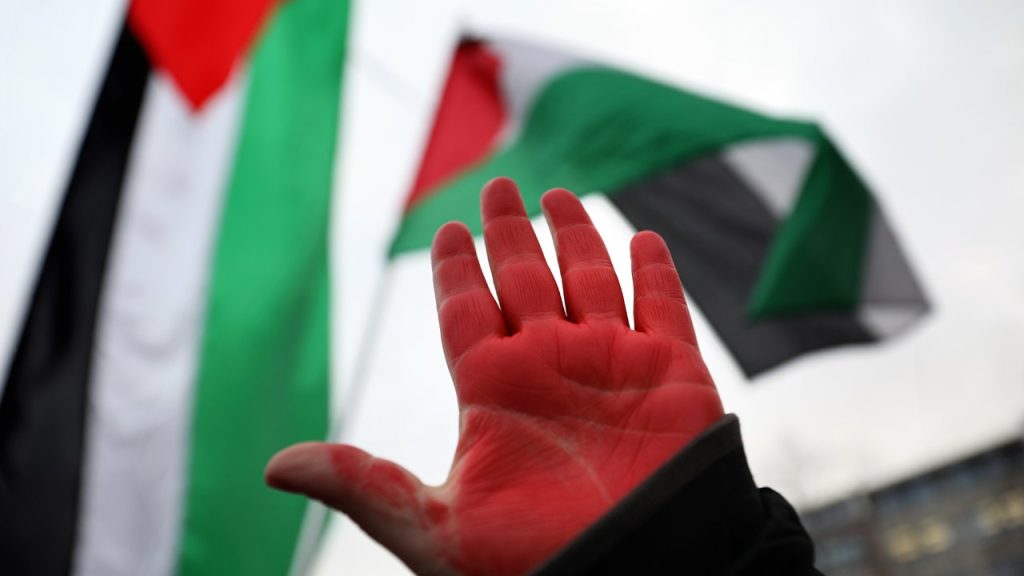Pro-Palestinian demonstrators have been seen with painted red hands, which is said to symbolize the “emasculation of Jews” and a “bloody defeat.” Anne Bayefsky, Director of the Touro Institute on Human Rights and the Holocaust, explained that these red hands represent brutality and human depravity, particularly referencing the Ramallah Lynching of 2000 during the 2nd Intifada. This incident involved the brutal lynching of two IDF reservists by a Palestinian mob, with one of the killers waving his bloodied hands to the crowd. Bayefsky mentioned that there is a direct line between this event and recent attacks, highlighting the violent antisemitism behind the painted red hands.
The Ramallah Lynching of 2000 was a horrific act that left a lasting impact on the Israeli population, symbolized by the image of a Palestinian killer waving his bloodied hands to cheering crowds. This event has been referenced by Bayefsky as the origin of the painted red hands seen at pro-Palestinian demonstrations, signifying a brutal defeat and the emasculation of Jews. The red hands are a reminder of the violence and depravity faced by Israelis in their ongoing struggle for survival. The connection between the Lynching and recent attacks serves to highlight the ongoing threat of violent antisemitism faced by Israel.
The painted red hands serve as a symbol of violent antisemitism and reinforce Israel’s position in an existential war against “the destroyers of civilization.” Bayefsky emphasized that the hands represent the reality of violent antisemitism that is prevalent in America and beyond, and underscore the stakes of Israel being denied the right to defend itself. By invoking the significance of the red hands and their deeper meaning, Bayefsky is drawing attention to the gravity of the situation and urging for a better understanding of the threats faced by Israel.
The recent protests by Code Pink, a far-left anti-war group, inside the Dirksen Senate Office Building in Washington, D.C., resulted in dozens of arrests by the U.S. Capitol Police. The protesters chanted slogans against the Israeli war in Gaza, further highlighting the tensions surrounding the conflict. These protests, along with the symbolism of the painted red hands, underscore the ongoing struggle between pro-Palestinian and pro-Israeli sentiments in the United States and around the world.
The image of the painted red hands and their association with the Ramallah Lynching of 2000 evoke a sense of horror and brutality, serving as a reminder of the violence and depravity faced by Israelis. Bayefsky’s explanation of the deeper meaning behind these red hands sheds light on the context of pro-Palestinian demonstrations and the intense emotions surrounding the Israeli-Palestinian conflict. The link between past incidents and current events emphasizes the ongoing nature of the struggle and the need for greater awareness and understanding.
In conclusion, the painted red hands seen at pro-Palestinian demonstrations carry a powerful symbolism that represents the traumatic experiences of Israelis in the face of violent antisemitism. By referencing events like the Ramallah Lynching of 2000, these red hands serve as a stark reminder of the brutality and depravity faced by the Jewish population. Bayefsky’s statements further underscore the gravity of the situation and emphasize the need for a better understanding of the challenges and threats faced by Israel in its ongoing struggle for survival.


